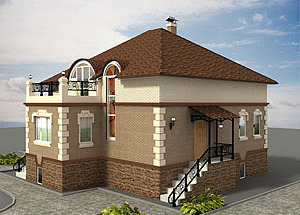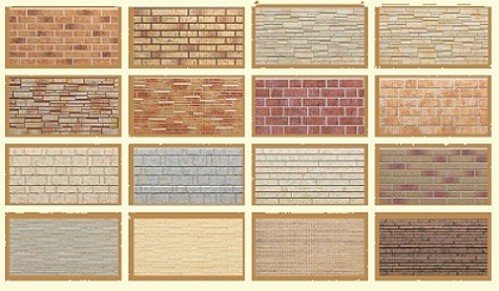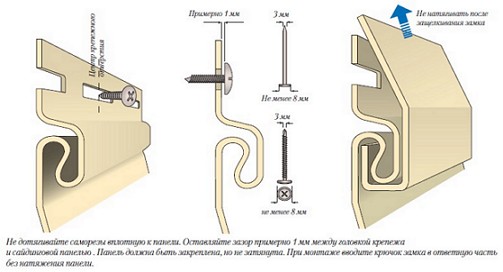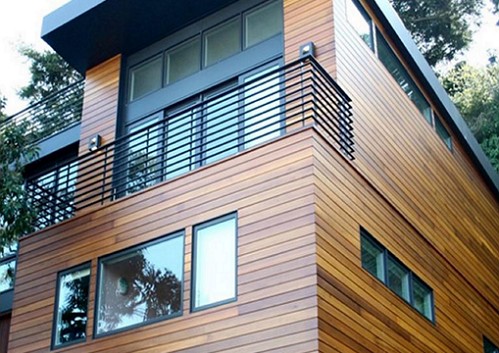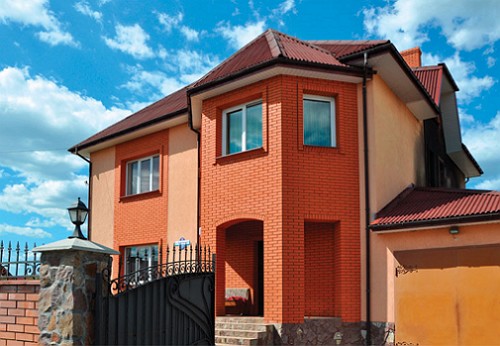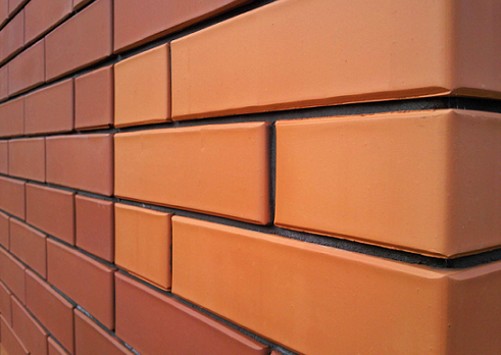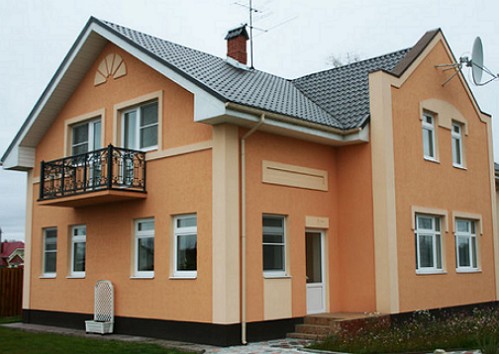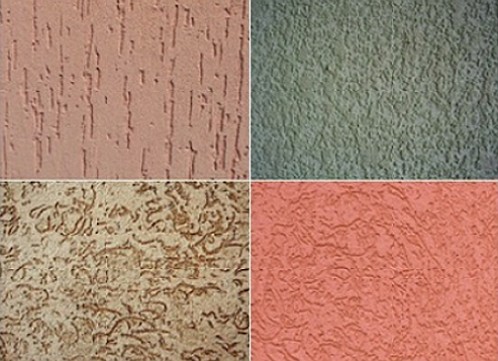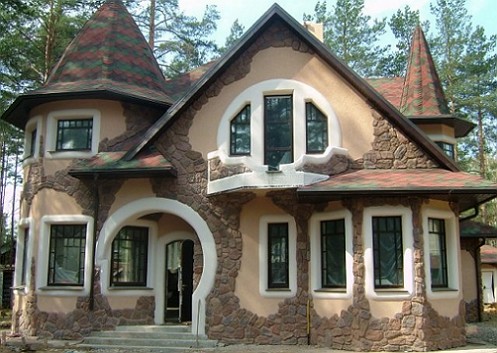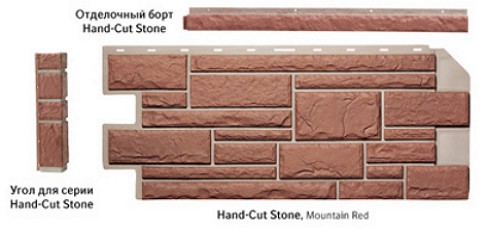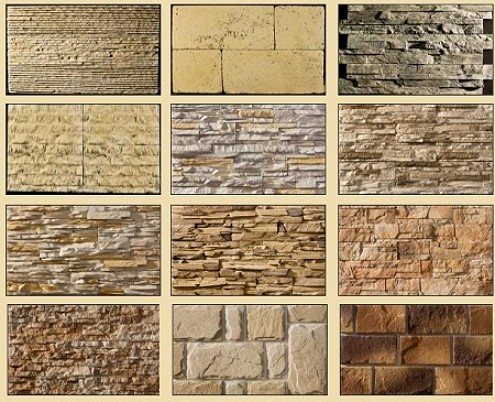The complex and responsible stage of the construction of the house is the decoration of the facade. Without a creative approach and practical rationalism simply can not do. When decorating the facade, you need to take into account the aesthetics of the material and its characteristics. Correctly selected materials will make it possible to realize the grandiose intentions of designers and self-taught masters.
Content
Make up or make-up for the facade of the house
In the environment of professional builders, the decoration of the facade of the house is given special significance. The construction, in which significant forces and material resources were invested, are considered unfinished, in the event that the decoration of the facade of the house has not been formalized.
That is why the choice of decoration and design of the "image" of the house should be approached competently and responsibly. Undoubtedly, the main function of facade decoration is the decorative component, which must be combined with the personal plot landscapes. Naturally, the first strokes of creating the image of the facade and the formation of a sense of taste are laid at the stage of designing the building, one can say from the very early years.
Recall that the exterior decoration of the facade of buildings is, of course, an improvement in the interior, as well as the creation of a good sound insulation and insulation. What "make-up" does the construction industry offer for the facade?
Kinds of furnish of facades of houses: secrets of decorative cosmetics
Today the choice of finishing materials intended for the facade pleases the eye. These are the materials:
• Siding
• Lining
• facing bricks
• decorative plaster
• artificial and natural stone.
siding and lining
Siding and lining can be called "makeup for every day." Indeed, this is the most simple and inexpensive way to improve the exterior facade. The exterior finish of siding (metal and vinyl) is inspired by a variety of textures and colors.
Vinyl siding has all the positive qualities: it is resistant to sun, wind and rain. Siding is not subjected to buckling and deformation, it does not require much care, especially the siding can be made by hand.
Installation begins with the device of the crate. Siding installation is carried out in stages:
• determine the beginning of the installation point
• fixing the starting material strip
• make installation of accessories
• insulation of window and doorways
• installation of all cladding panels
• set the upper wall edges.
Evrovagonka is excellent for the organization of facades, socles, as well as filing soffit (cornice gable eaves). You need to design reliable materials that have the coloring and texture of the tree? Please, the euro-board successfully copes with the task.
Hanging a new false facade on the house, you can successfully level out construction defects (dents, cracks or high).
Facing with siding and lining works with almost any type of exterior surface of the house.
facing brick
"Classics of the genre" when decorating the facade, you can safely call the brick facing, as well as clinker, which is used for exterior decoration.
Clinker is a decorative type of facial bricks, so for facing use the basic principles of masonry and dressings.
Of course, textured clinker brick and tiles for finishing the facades of houses allow you to diversify the masonry or accent facade elements - framing corners, door and window openings or columns.
But shot and embossed relief facing surfaces require special and constant care.
You can find out all the details about finishing the facade in this video.
decorative plaster
Material # 1 for finishing the facade of the house is plaster. Decorative plaster has no special secrets, because it is a ready water-dispersed mixture. It remains only to take and apply plaster, sometimes even in several layers, in order to achieve the maximum effect of freshness and "youth."
Remarkably, it can re-apply decorative plaster after a long period of time. This means that properly plastered facade of the house can hide the real age of the structure.
Finishing of facades using plaster is carried out manually or mechanically, using standard tools and devices.
It is recommended to follow the manufacturer's recommendations, which include the application technology and the drying time of the facing layer. The most popular are plasters:
• mineral
• silicone
• Acrylic.
The technology of applying decorative plaster can be called the most laborious and difficult kind of decoration. But how beautiful is the decoration of the facade of any house!
artificial or natural stone
Decorating the facade of the house with artificial stone or facing brick
it is already more solid material for finishing. If you can say, "evening make-up", make-up from the couturier. The facade, ennobled with stone or facing brick, always looks respectable and expensive.
All photos of finishing the facade of the house with a stone cause admiration and some envy. True, creating a facade, you will have to work hard, because working with a stone at all times was considered the most difficult. So, for example, masonry Hand cut stone, imitating handmade, in its complete form is an interesting design.
When decorating a facade using artificial or natural stone, there is an excellent opportunity to combine stone with various finishing materials.
Therefore, the combination of "plaster - stone" or "panel - stone" realize the original solution for the color and style of facade or socle elements. The installation of the stone is made taking into account angular and rounded elements, including the arrangement of door and window openings.
However, natural and artificial stone is a "heavy" kind of decoration. Therefore, before the intended use of the material, it will not be impossible to carry out an examination and examination of the facade in order to identify the possibility of withstanding a significant load.
For facing with natural stone, preference should be given to the well-processed material: sandstone, travertine, limestone and rubble stone.
The traditional technology of fixing stone on the facade or walls of the house assumes a "wet" method based on the use of freshly prepared cement glue.


